When someone offers you their coveted inbox space, here’s how to keep them from clicking “unsubscribe.”
Here, you’ll find:
- How auto-send emails improve segmentation efforts
- Reasons to create these email types
- Which elements to include in your auto-send emails
- Examples of successful automatic email sends
These days, there are dozens of ways for an automated brand email to end up in your inbox. Maybe you asked for a digital receipt, an online purchase came with a newsletter subscription, or you wanted an e-commerce company’s coupon code.
Auto-send emails are sent out when someone takes an action like signing up for a newsletter or requesting a consultation. For businesses, auto-emails as part of an overall email marketing strategy make it possible to achieve a 4,400% ROI.
Let’s be real: no matter how you slice it, our inboxes are stuffed as is. That’s why it’s crucial that your auto-send emails are personal, carry value, and drive the customer to take the desired action — something other than clicking “Mark as Spam.”
Here’s a closer look at creating top-notch auto-send emails.
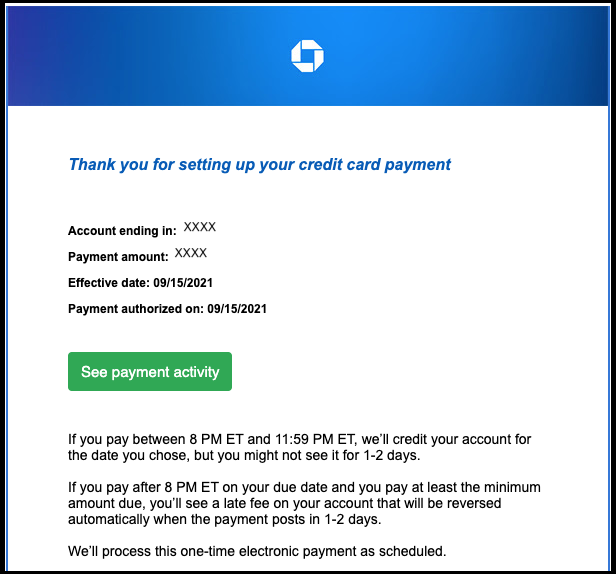
An automatic email from Chase regarding a credit card payment — short and to the point, complete with a CTA.
1. Make it quick
While auto-send welcome emails and transactional missives need to contain valuable info, the content shouldn’t be exhaustive. You’re better off keeping things short and sweet, with minimal design.
The key to creating an automated email that works is brevity and speed. It should take less than a minute to process the content and take action. (If you need to explain further, keep the lengthier content on your site and link to it in the email.)
Unless it’s an abandoned cart notice that contains product images, it’s usually best to keep media to a minimum. Plus, some people use email programs that block visuals, making it render poorly on their end.
The perfect auto-send email should contain a concise — preferably text-based — message, relevant links, and a clear call to action (CTA).
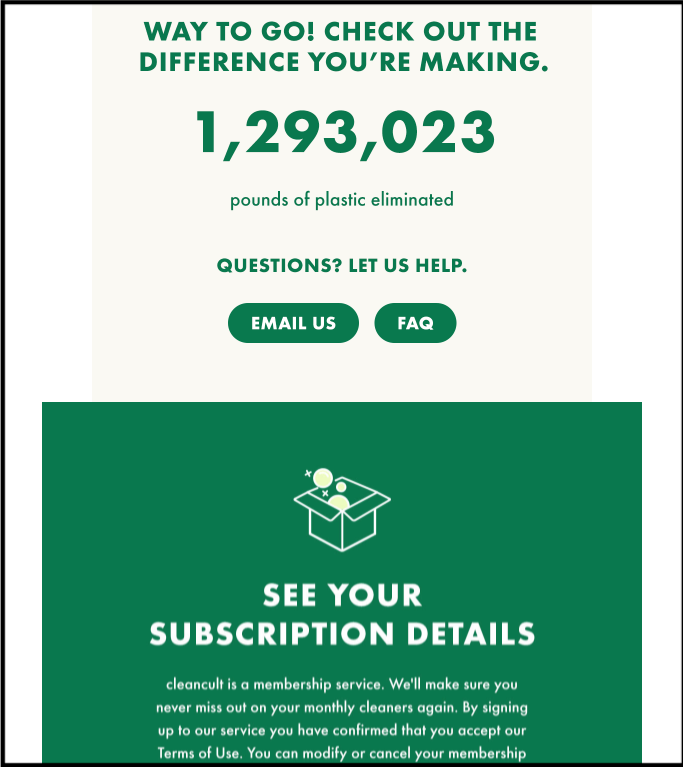
Eco-friendly cleaning products company Cleancult reminds shoppers of their environmental impact in the receipt email after an online purchase.
2. Use authentic messaging
Storytelling is behind almost all successful marketing campaigns. The same can be said for auto-send emails.
Today, 83% of millennials say it’s important for companies they buy from to align with their values and beliefs. What’s more, 76% of 18-34 year-olds say they appreciate when CEOs speak on issues they also care about.
Use the opportunity to tell a story, catch the potential customer’s attention, and make an important emotional connection. You don’t need to write a 2,000-word narrative.
A concise story about the “why” behind why you started your company or the impact it has on a particular cause is an excellent start.
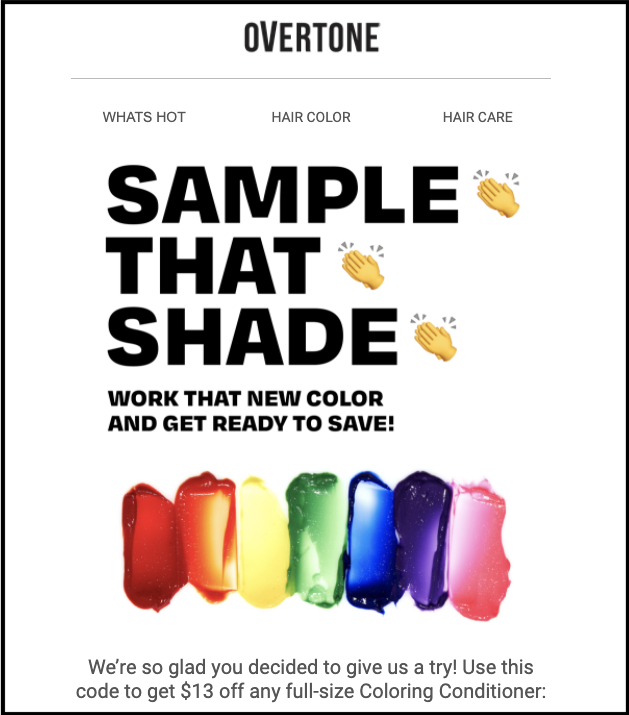
Hair color brand Overtone offers coupon codes for first-time buyers and those who sign up to receive periodic emails from the brand.
3. Provide incentives
The focus of many of these emails is to drive the reader to your website.
Sure, some messages are simply to thank someone for signing up and letting them know what will happen next. But in many email series, your CTA will aim to bring the customer or client to the site. This can easily be achieved by offering some sort of incentive.
Depending on your marketing campaign, consider adding a perk to your automated email message. For example:
- A coupon code
- Content designed specifically for subscribers
- Free shipping for a limited time (for abandoned cart emails)
Incentives give subscribers an extra push forward without taking a toll on your marketing budget as well.
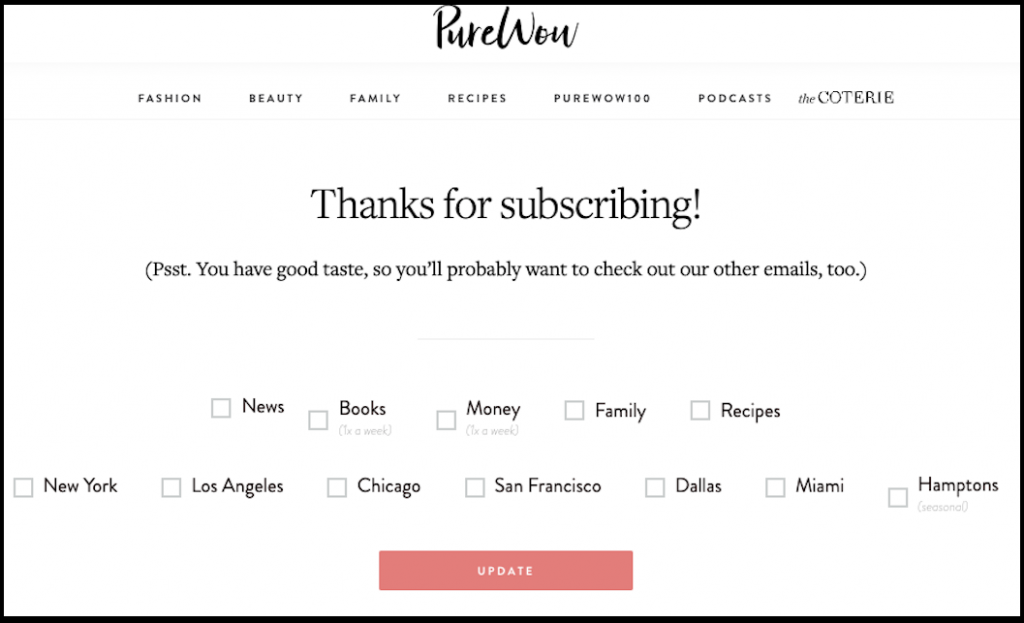
Purewow has various newsletters segmented by interest and region, giving subscribers plenty of choices about the kind of emails they receive.
4. Ask about preferences
Segmentation is the key to a well-executed email marketing campaign. To ensure relevancy, each new subscriber should have an opportunity to tell you about their preferences, if applicable.
Within the email (either a welcome email or the next one in the campaign series), ask the client why they signed up for the email list and what they want from this collaboration.
A quick multiple-choice survey can become a powerful segmentation weapon that increases customer satisfaction.
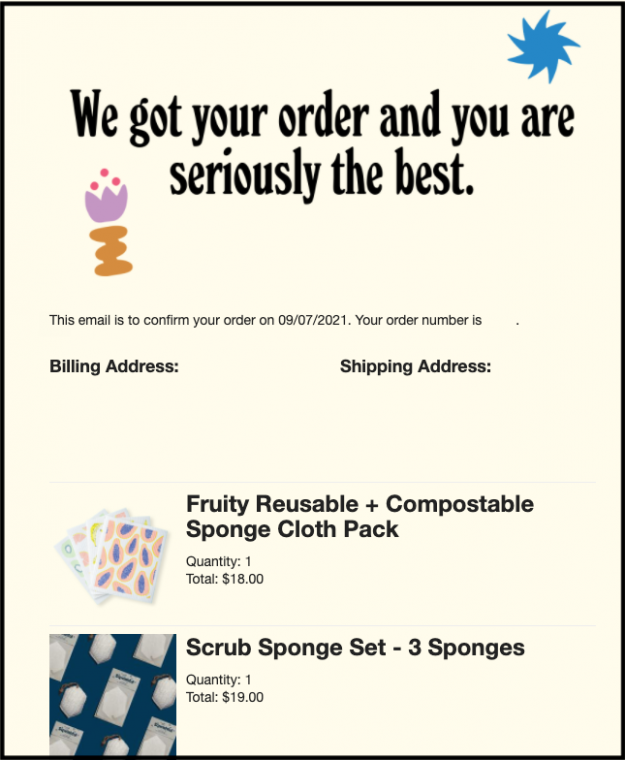
Online marketplace Goldune lets their personality shine, even in their automated order confirmation emails.
5. Maintain brand personality
No matter the reason for the email, it should somehow reflect your brand. This can be through the color scheme, the logo, the language you use, or something more.
This helps the recipient get a feel for your company’s ethos, and it can help foster a stronger connection. Plus, it lets you show some (appropriate) personality through your copy.
Bonus: By establishing a unique tone for your auto-send emails, you’re also fortifying brand awareness.
Need more help with your email marketing? Let’s chat.
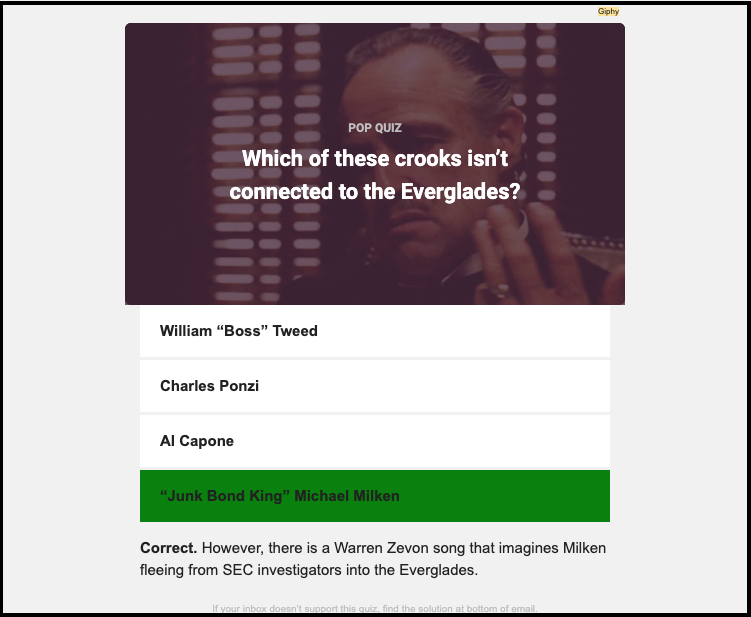
The Quartz Weekly Obsession newsletter engages readers by using GIFs as well as interactive quizzes that can be taken right in the email itself.
6. Include interactive or multimedia elements
Interactive emails keep your target audience engaged. To make your email interactive, you can:
- Add GIFs
- Include short videos
- Embed a brief survey
- Add gamified content
No matter how serious your message is, leveraging multimedia can keep the reader scrolling and even lead to conversions.
Pro tip: More than 80% of surveyed marketers agree that interactive content is a much more powerful attention grabber than static content.

Transcription service Rev keeps their copy light and fun, even in the “unsubscribe” section of their auto-send emails.
7. Make it easy to unsubscribe
No matter how hard you work hard to gather email addresses for your list, you should always be ready to let go. Make it easy for subscribers to opt out of the list if they don’t want to keep getting emails from you for whatever reason.
Having disinterested people on your email list can interfere with your campaign analytics and eat up your marketing budget.
Pro tip: Before setting up your auto-send email series, review the CAN-SPAM Act to make sure you’re meeting all the proper requirements.
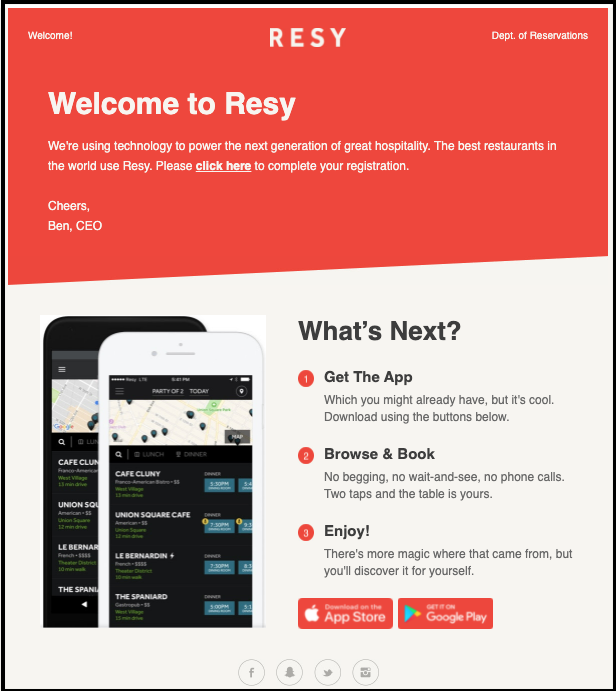
Restaurant reservation service Resy’s welcome email includes simple, clear next steps to follow.
8. Offer clear next steps
Once the customer subscribes to your email list, you want to encourage action as soon as possible to keep them engaged. That’s why your welcome or onboarding auto-send emails should have a clear list of steps to follow.
Even for something like a consultation request, you can use language like “In the meantime,” and offer up some content to read that they might find valuable and relevant.
Your goal is to help users get started without overwhelming them. Actionable steps with relevant links help the reader hit the ground running.
The takeaway
Auto-send emails are one of the most popular forms of marketing automation. When done right, they’re a highly effective way to hook customers and prospects without over-stretching your budget.
A successful auto-send email is short, valuable, personalized, and actionable. While it may take some A/B testing to create a perfect automated email, the effort can result in impressive ROI.

